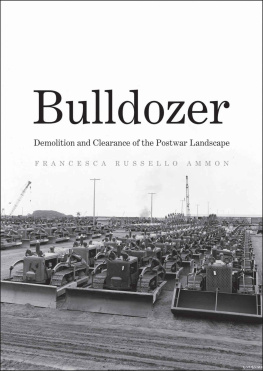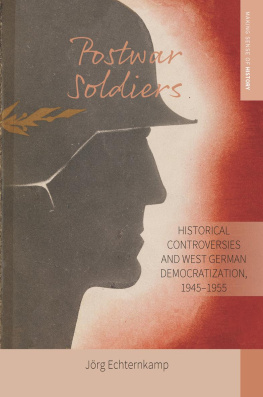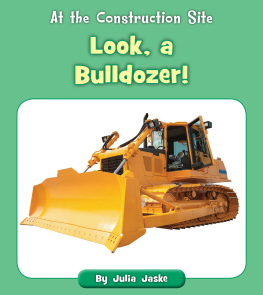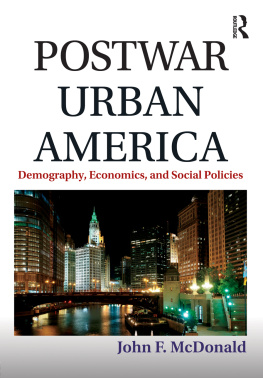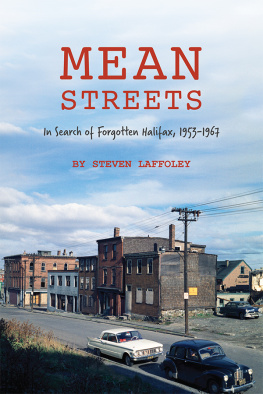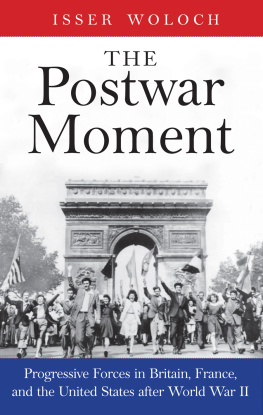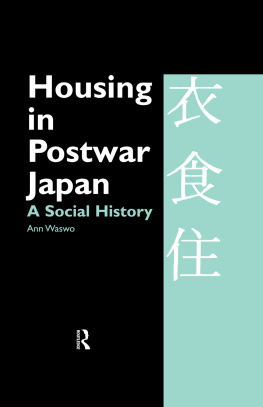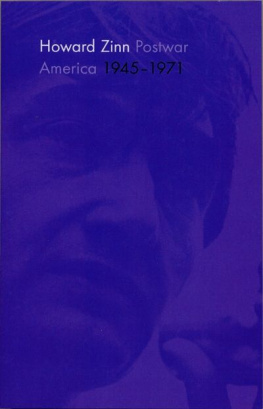Bulldozer

Bulldozer
Demolition and Clearance of the Postwar Landscape
FRANCESCA RUSSELLO AMMON

Published with assistance from the Ronald and Betty Miller Turner Publication Fund, from the income of the Frederick John Kingsbury Memorial Fund, and from the foundation established in memory of Philip Hamilton McMillan of the Class of 1894, Yale College.

Illustrations in this book were funded in part or in whole by a grant from the SAH/Mellon Author Awards of the Society of Architectural Historians.
Copyright 2016 by Francesca Russello Ammon.
All rights reserved.
This book may not be reproduced, in whole or in part, including illustrations, in any form (beyond that copying permitted by Sections 107 and 108 of the U.S. Copyright Law and except by reviewers for the public press), without written permission from the publishers.
is modified and expanded from Unearthing Benny the Bulldozer: The Culture of Clearance in Postwar Childrens Books. Copyright 2012 The Johns Hopkins University Press. This article first appeared in Technology and Culture, volume 53, issue 2, April 2012, pages 306336.
Yale University Press books may be purchased in quantity for educational, business, or promotional use. For information, please e-mail (U.K. office).
Designed by Mary Valencia.
Set in Century type by Tseng Information Systems, Inc.
Printed in the United States of America.
Library of Congress Control Number: 2015950794
ISBN 978-0-300-20068-3 (cloth : alk. paper)
A catalogue record for this book is available from the British Library.
This paper meets the requirements of ANSI/NISO Z39.48-1992 (Permanence of Paper).
10 9 8 7 6 5 4 3 2 1
Frontispiece: Lowell Georgia/Denver Post/Getty Images (modified; see p. 201).
For Peter, Isabella, and Oliver
Contents
A Culture of Clearance
Engineers and Seabees as World War II Heroes
Equipment Manufacturers Prepare for Postwar Prosperity
Suburban Land Clearance in Orange County, California
Urban Renewal Demolition in New Haven, Connecticut
Engineering the Postwar Highway Boom
Childrens Books and Tonka Trucks
Earthworks and Building Cuts in Conceptual Art
Toward a Culture of Conservation
Acknowledgments
T his book is the product of years of research, writing, and conversation. It is my pleasure to acknowledge the many people who have enriched my thinking on this topic and the multiple institutions that have afforded me access to this books wide-ranging source material. I also offer a quiet nod of thanks to the varied social spacesfrom libraries and archives to conference rooms, coffee shops, and kitchen tablesthat provided both scenery and soundtrack for the solitude of writing.
I have benefited immeasurably from the support of valued mentors. Dolores Hayden initially observed that a study of demolition might appeal to my interests. Not only was this a wonderful idea, but Dolores has proven to be an ideal advisor. I have appreciated her encouragement, advice, and example, and I thank her immensely for the countless investments she has made in me throughout this process. Jean-Christophe Agnew shared his enthusiasm for cultural history and inspired me with his expansive ability to see connections across space and time. Seth Fein, Matthew Jacobson, and Laura Wexler also read drafts of parts of this project and shared feedback that has greatly improved the shape of the book. A fellowship from the Miller Center for Public Affairs introduced me to Edmund Russell, who offered valuable suggestions on early chapters as well.
I have appreciated the opportunities to present and discuss parts of this project at meetings of the Society for American City and Regional Planning History (SACRPH), Urban History Association, International Planning History Society, American Studies Association, Business History Conference, and Policy History Conference, and at symposia and workshops organized by Hagley Museum and Library, the Program on the Study of Capitalism at Harvard, the Agrarian Studies and American Studies programs at Yale, and the Under Construction conference at Stuttgart University. Among the many scholars I have met throughout these academic communities, Lizabeth Cohen, Alison Isenberg, Mark Rose, Zachary Schrag, and Lawrence Vale have been particularly generous in nurturing my work. Thanks also to Thomas Andrews, Brian Balogh, Kevin Boyle, Richardson Dilworth, Philip Ethington, Richard Harris, Roger Horowitz, Carl Kramer, Pamela Laird, William Rankin, Adam Rome, Elihu Rubin, Aaron Shkuda, Steven Tolliday, and Shirley Wajda for their helpful comments on papers and presentations along the way. Without having read a word of this project, David P. Billington provided the example that first motivated me to begin studying the built environment. I thank him for his multi-dimensional approach to studying the urban environment, and for the inspiration of his teaching and scholarship.
Other colleagues have provided equally vital support. My writing group prompted me to start writing before I thought I was ready. Of course, that was precisely when it was time to begin. I thank Helen Curry, Julia Guarneri, Sara Hudson, Kathryn Gin Lum, Catherine McNeur, and Robin Morris for many spirited potluck dinners and generous feedback. Happily, Catherine remained a diligent reader and a ceaseless source of encouragement and advice well after our writing group had dispersed. I am also grateful for exchanges of work with Alice Moore, who especially pushed me to make the most of my visual material. Andy Horowitz shared his deep knowledge of New Haven and remained unflagging in his enthusiasm for this project. Dara Orenstein has been a valued fellow-traveler and gracious Washington, D.C., host. Daniel Amsterdam, Brian Goldstein, Jennifer Hock, Lauren Pearlman, and Sara Stevens offered further support, alongside the inspiring example of their own scholarship. Although Roxanne Willis and I crossed paths only briefly in New Haven, I was fortunate to reconnect with her near this projects end. Roxannes editorial advice on multiple chapters significantly sharpened my ideas and my prose.
Several organizations have generously funded research, travel, and writing time. I thank Yale University and its Lamar Center for Frontiers and Borders; the Mrs. Giles Whiting Foundation; the Miller Center for Public Affairs and the Ambrose Monell Foundation; the Business History Conference; the Center for the History of Business, Technology, and Society, Hagley Museum and Library; and the Lemelson Center for the Study of Invention and Innovation. I had the privilege of spending a year at the American Academy of Arts and Sciences. This fellowship provided the space, time, and community necessary for me to push this project forward at a critical stage. I thank my American Academy colleagues for their insights, suggestions, and Thirsty Scholar companionship. Thanks to Melinda Baldwin, Hillary Chute, Matthew Karp, Christopher Loss, Nikki Skillman, and Peter Wirzbicki. Thanks also to Mary Maples Dunn and Patricia Spacks for their nurturing leadership of this group.
My colleagues at the University of Pennsylvania have warmly welcomed this historian into the School of Design. Domenic Vitiello and Aaron Wunsch have been wonderful co-instructors, showing me the joys of teaching collaboratively. I thank other fellow faculty members in City and Regional Planning and Historic Preservationincluding Stefan Al, Eugenie Birch, Thomas Daniels, Erick Guerra, Amy Hillier, John Landis, Randall Mason, Frank Matero, Megan Ryerson, and Laura Wolf-Powersfor making PennDesign a comfortable home. Penns Humanities + Urbanism + Design Initiative has offered another valuable sounding board for my work. My students have also enriched my thinking on this topic. In particular, I thank Amber Woodburn for her thoughtful feedback on .
Next page
